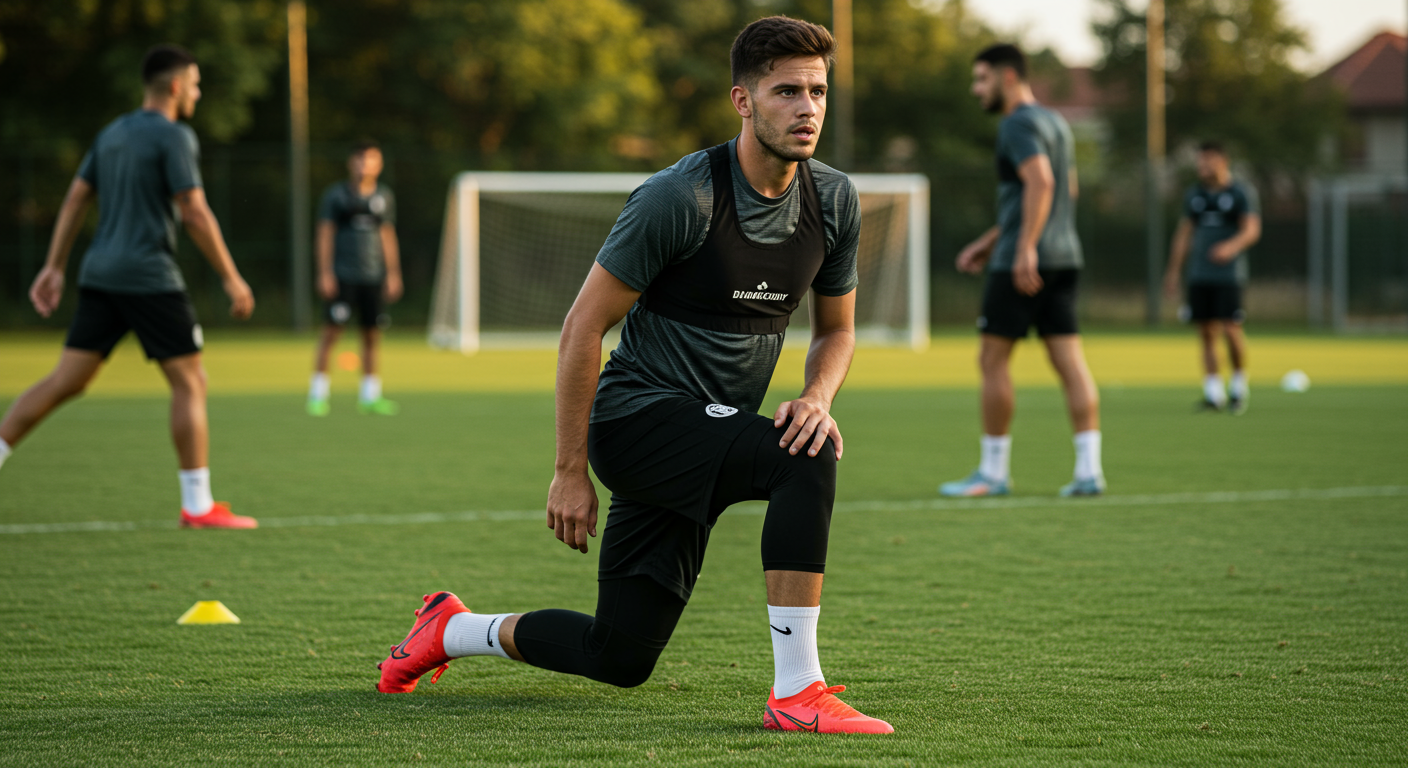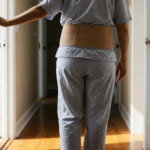Athletic Excellence: Understanding and Managing Sports Hernias
Sports hernias, also known as athletic pubalgia, affect thousands of athletes annually. Unlike traditional hernias, these injuries involve torn or strained soft tissues in the lower abdomen or groin area without creating a visible bulge. Understanding prevention and proper support can help athletes return to peak performance.
What Exactly is a Sports Hernia?
A sports hernia is a painful soft tissue injury occurring in the groin area, most commonly where the abdominal muscles attach to the pubic bone. Despite its name, it’s not a true hernia—there’s no hole in the abdominal wall and no protruding tissue.
Common Affected Areas:
- External oblique muscles
- Internal oblique muscles
- Transversus abdominis
- Adductor muscles
- Rectus abdominis insertion
High-Risk Sports and Activities

Sports with Highest Incidence:
- Soccer (football)
- Ice hockey
- Tennis
- Rugby
- American football
- Wrestling
- Track and field (sprinting, hurdling)
Movement Patterns That Increase Risk:
- Sudden direction changes
- Explosive twisting motions
- Repetitive hip flexion
- Intense core rotation
- Aggressive planting and cutting
Recognizing the Signs
Early Warning Symptoms:
- Gradual onset groin pain
- Pain during sports but not at rest initially
- Discomfort with twisting movements
- Pain with sit-ups or crunches
- Tenderness in lower abdomen
Progressive Symptoms:
- Pain spreading to inner thigh
- Difficulty with explosive movements
- Morning stiffness in groin
- Pain with coughing or sneezing
- Testicular pain in males
Prevention Strategies
Core Strengthening Program

Essential Exercises:
- Plank Variations
- Standard plank: 3 sets, 30-60 seconds
- Side planks: 2 sets each side, 30 seconds
- Dynamic planks: 3 sets, 10 reps
- Dead Bug Exercise
- Controlled opposite arm/leg movements
- 3 sets of 10 reps each side
- Focus on maintaining neutral spine
- Bird Dog
- Quadruped position stability
- 3 sets of 12 reps each side
- Slow, controlled movements
Hip Flexibility Routine
Daily Stretches:
- Hip flexor stretches: 3 x 30 seconds each side
- Adductor stretches: 3 x 30 seconds
- Piriformis stretches: 2 x 30 seconds each side
- Dynamic leg swings: 15 each direction
Proper Warm-Up Protocol
- General cardiovascular warm-up (5-10 minutes)
- Dynamic stretching routine
- Sport-specific movement patterns
- Gradual intensity increase
- Core activation exercises
Support Options for Athletes
Compression Shorts with Targeted Support
- Built-in groin straps
- Graduated compression
- Moisture-wicking materials
- Allows full range of motion
- Can be worn during competition
Athletic Hernia Belts
- Specific design for sports hernias
- Adjustable compression levels
- Removable support pads
- Low-profile for sports use
- Breathable materials
Groin Support Wraps
- Customizable fit
- Targeted compression
- Easy to adjust during activity
- Versatile positioning
- Machine washable
Treatment and Recovery Protocol
Immediate Management (First 48-72 hours)
- Rest from aggravating activities
- Ice application: 20 minutes, 3-4 times daily
- Compression support
- Anti-inflammatory medications (if approved)
- Gentle stretching
Conservative Treatment Phase (2-6 weeks)
- Physical therapy program
- Progressive core strengthening
- Manual therapy techniques
- Gradual return to activity
- Consistent support use
Advanced Recovery (6-12 weeks)
- Sport-specific rehabilitation
- Plyometric training
- Agility work progression
- Full strength training
- Competition preparation
When Surgery Becomes Necessary
Surgical Indicators:
- Failed conservative treatment (3-6 months)
- Severe pain limiting daily activities
- MRI-confirmed significant tears
- Professional athlete timeline constraints
- Chronic recurring symptoms
Post-Surgical Support
- Specialized post-operative binders
- Gradual compression reduction
- Progressive mobility protocol
- Return-to-sport timeline: 6-12 weeks
- Long-term prevention focus
Return to Sport Guidelines
Phase 1: Foundation (Weeks 1-4)
- Walking program
- Gentle core activation
- Flexibility maintenance
- Proper support use
- Pain-free movement only
Phase 2: Progression (Weeks 4-8)
- Jogging introduction
- Dynamic stretching
- Light resistance training
- Sport-specific drills (low intensity)
- Continued support use
Phase 3: Advanced (Weeks 8-12)
- Full training resumption
- Competition preparation
- Maintenance program
- Gradual support weaning
- Performance optimization
Long-Term Management
Maintenance Program:
- Daily core routine (10-15 minutes)
- Regular flexibility work
- Proper warm-up habits
- Periodic support use
- Annual screening
Lifestyle Modifications:
- Balanced training programs
- Adequate recovery time
- Proper nutrition
- Hydration focus
- Sleep optimization
Choosing the Right Support
Key Features for Athletes:
- Breathable, moisture-wicking fabrics
- Flexible yet supportive design
- Anti-chafing construction
- Easy cleaning/quick drying
- Durable materials
- Sport-specific features
Fit Considerations:
- No restriction of movement
- Stays in place during activity
- Comfortable for extended wear
- Easy adjustment capability
- Appropriate compression level
Mental Aspects of Recovery
Psychological Challenges:
- Fear of re-injury
- Frustration with timeline
- Identity concerns
- Performance anxiety
- Team dynamics
Coping Strategies:
- Set realistic goals
- Focus on controllables
- Maintain team involvement
- Seek support resources
- Celebrate small victories
Success Stories and Inspiration
Many elite athletes have successfully returned from sports hernias:
- Maintained career longevity
- Achieved personal bests post-recovery
- Became prevention advocates
- Helped teammates avoid injury
- Continued at elite levels
Key Takeaways
- Early recognition prevents severe injury
- Proper support aids recovery and prevention
- Comprehensive approach ensures best outcomes
- Patience during recovery prevents setbacks
- Prevention is always better than treatment
Remember, every athlete’s journey is unique. Work closely with sports medicine professionals to develop a personalized prevention and treatment plan. With proper support and dedication to recovery, returning to peak performance is absolutely achievable.




